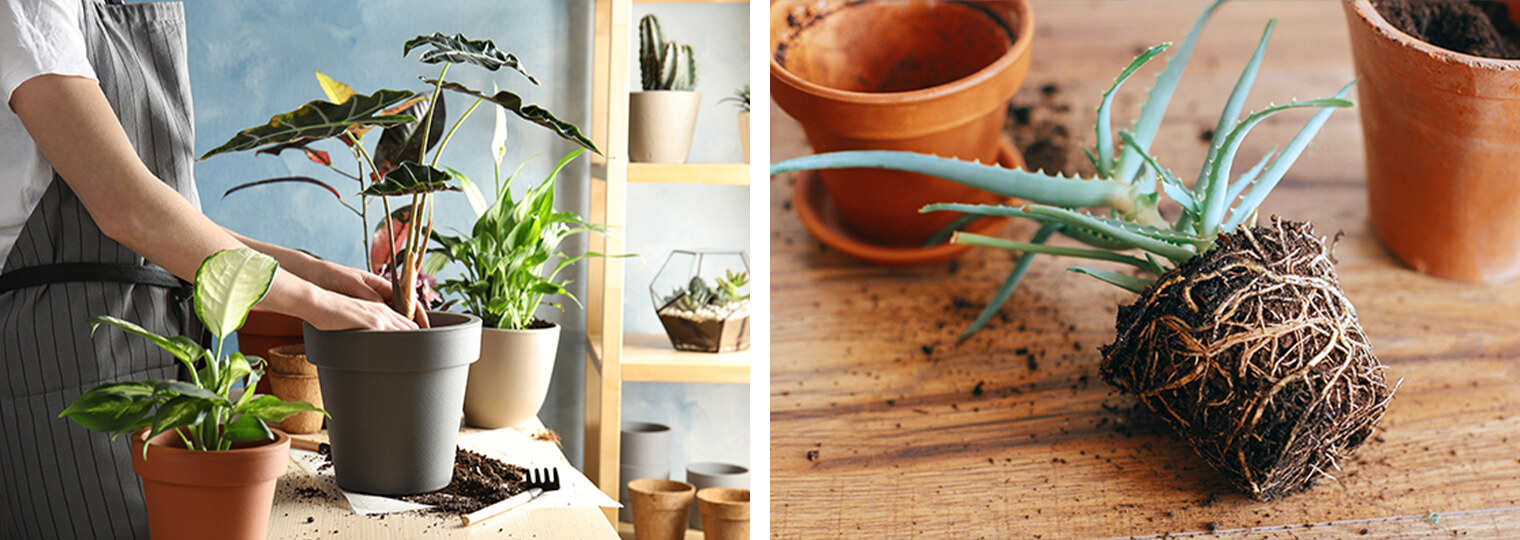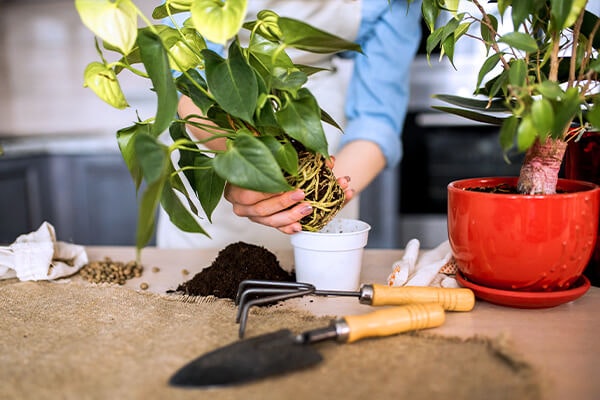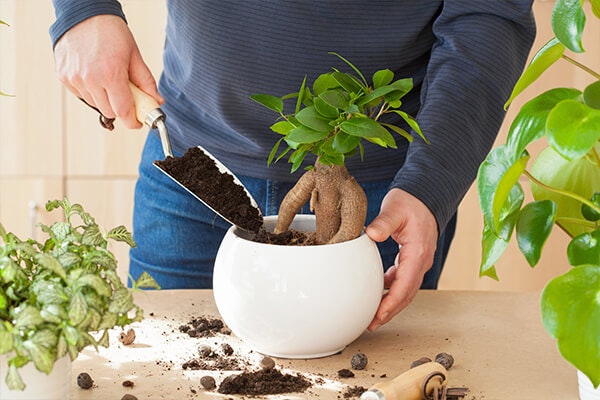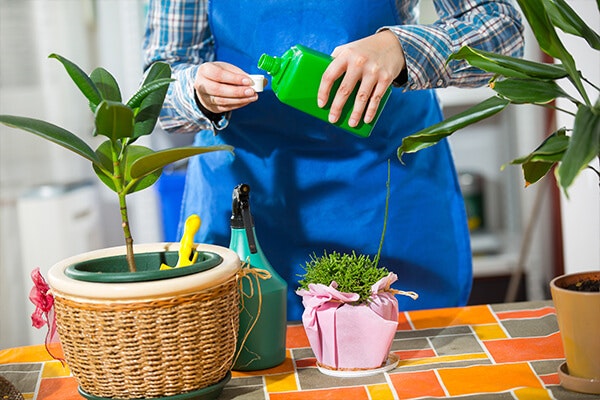 Be Inspired Blog - Arizona
Be Inspired Blog - Arizona

Best Tips to Houseplant Repotting & Fertilizing
Moving can be stressful — you have to make sure you find the right space, bring along everything you need, and let go of the things that no longer serve you. The same goes for houseplants that need a new home!
To make sure you and your plant have a stress-free repotting experience, we put together a guide. Your indoor plant oasis will thank you for it!

When to Repot Plants
If a plant is in a container that’s too small, it can become root-bound, meaning the plant’s dense roots become too tightly packed in the container. When this happens, the roots can’t take up many nutrients from the soil, and the plant won’t be able to grow much bigger. This is why root-bound plants require repotting.
You can spot a root-bound plant if you see roots poking above the soil surface or out of drainage holes. A root-bound plant’s leaves might be brown or yellow and starting to wilt. You may also notice your plant hasn’t grown much recently.
In the greater Metro Phoenix area, it's generally best to repot houseplants during the cooler months, typically in early spring or fall. The extreme heat of summer can stress plants, making it harder for them to recover from the repotting process.
- Repot in Early Spring or Fall: These are the ideal times as temperatures are more moderate, and plants can establish roots before the extreme heat sets in.
- Avoid Repotting in Summer: Repotting during the intense heat of summer can shock plants and make it difficult for them to adjust.
- Indoor Environment: If your houseplants are kept indoors and you maintain a consistent, comfortable temperature, you have more flexibility and can repot them at any time of the year.
- Proper Watering: After repotting, ensure the plants are adequately watered, but avoid overwatering, as newly potted plants need to establish roots first.
Overall, while it's possible to repot at any time if necessary, planning repotting around the milder seasons will give your houseplants the best chance to thrive.
How to Repot Houseplants
Whether you just picked up some new houseplants or the plants you’ve had for a while are starting to outgrow their containers, the process of repotting is the same.

- Choose a pot. Select a container one to two inches larger than the one the plant is currently in. If the pot is too small, the plant can remain root-bound or even topple over. If the pot is too big, the soil will stay too moist since the roots will not have expanded enough to absorb all that moisture.
- Water an hour or two before repotting. This makes the upcoming move much less stressful for the plant.
- Prepare the pot. We highly recommend using pots with drainage holes. You can add a layer of potting soil directly into the container. Otherwise, you might want to consider adding a layer of rocks to the bottom, then add your soil on top of that. If you want to use a pot without a drainage hole, we recommend that you plant the pot in an insert so that you can remove the plant for easy watering and ensure proper drainage. Once back in your pot, you can add decorative moss to the top of the insert to hide it from view.
- Remove the plant from its old home. Turn the old plant pot sideways, and while gently holding the stems, tap the bottom of the container until it slides out. You may need to give a gentle tug on the base of the stems.
- Prepare the plant. If the roots are tangled, gently unbind them. Take the opportunity to inspect the roots for any sign of pests or roots that appear to be limp and rotted. Remove rotted roots with a very sharp pair of scissors for a clean cut. For adeniums and bonsai care, please refer to our blogs on those specific plants.
- Transfer the plant. Put the loosened roots into the center of the new pot and fill with soil. Pack the soil gently to avoid air pockets and root damage, then water the soil slowly to settle, add additional soil if needed. Pot the plant high in the soil, since the soil will continue to compact over the next 4-6 weeks.

When Should I Fertilize My Potted Plants?
Watering plants, though necessary, depletes nutrients in the soil. For houseplants, since they are in small controlled environments, nutrients aren’t being replenished in the soil like they are outside. Instead, we have to add these nutrients through fertilizing and using plant foods.
Instead of fertilizing after repotting in Arizona, wait at least a month after your plant has become comfortable in the new pot. After that month has passed, we recommend fertilizing every two weeks. For most species, Shultz Plant Food Plus is a great addition to give your houseplants the little boost they need.
In the winter, feed your houseplants with a time-release fertilizer like Osmocote Plus. After you apply it, each time you water the plant, the fertilizer is released into the soil, which feeds the plant for up to six months. We don’t recommend using water-soluble fertilizers in the winter, as this could burn the plant and roots if applied when the plant is dry.
As the summer heat approaches, it’s a great time to prepare your cool indoor getaway. Let us know if you need any new houseplants, tools, fertilizers or potting soil to get started!
At SummerWinds, We Guarantee Success!

